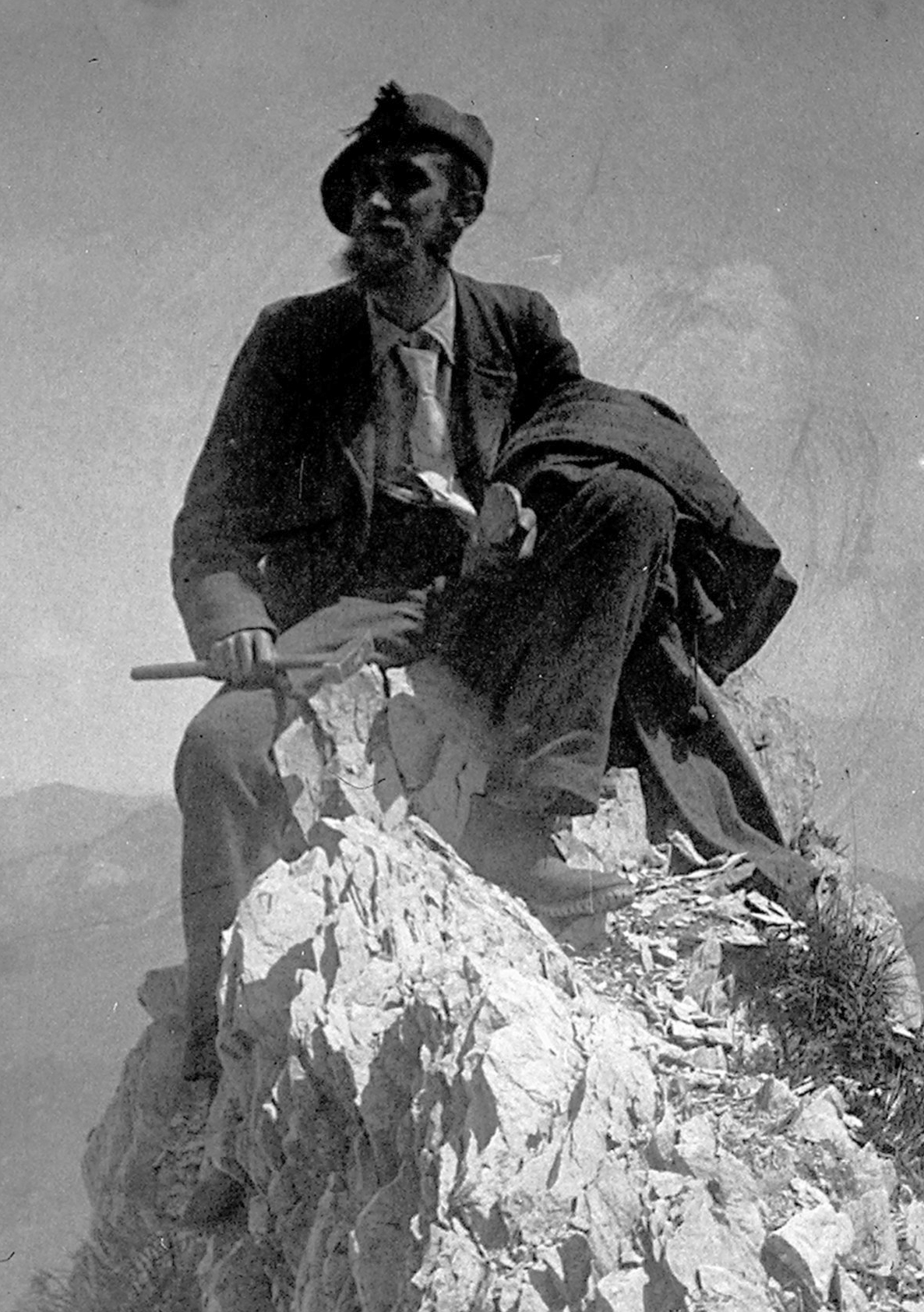|
Leo Wehrli
Leo Wehrli (born February 25, 1870, in Aarau; d. March 28, 1954 in Zurich) was a Swiss people, Swiss geologist, Gymnasium (school), secondary school and continuing education teacher, explorer, and photographer. Leo Wehrli studied music, botany, chemistry, mineralogy, petrography and geology in Berlin and Zurich and became assistant to Albert Heim. After submitting his dissertation on the Diorite area of Tschlin and Disentis, he went to Argentina with Carl Emanuel Burckhardt in 1896. On behalf of the La Plata Museum and the Argentine government, he explored the Andes and crossed them at least five times during his two-year stay. His work focused on the Argentine-Chilean border adjustment (after generations of conflict, both countries had only signed a Boundary Treaty of 1881 between Chile and Argentina, Border Treaty in 1881) and the determination of the summit lines and Drainage divide, watersheds. After his return, he worked from 1900 to 1935 as a teacher of geology and chemist ... [...More Info...] [...Related Items...] OR: [Wikipedia] [Google] [Baidu] |
La Plata Museum
The La Plata Museum () is a natural history museum in La Plata, Argentina. It is part of the (Natural Sciences School) of the National University of La Plata. The building, long, today houses three million fossils and relics (including 44,000 botanical items), an amphitheatre opened in 1992, and a 58,000-volume library, serving over 400 university researchers. Around 400,000 visitors (8% of whom are from outside Argentina) pass through its doors yearly, including a thousand visiting researchers. History Childhood excursions with his father and older brother led the 14-year-old Francisco Moreno to mount a display of his growing collection of anthropological, fossil and bone findings at his family's Buenos Aires home in 1866, unwittingly laying the foundations for the future La Plata Museum. Moreno spent the time between 1873 and 1877 exploring then-remote and largely unmapped Patagonia, becoming the first non-indigenous Argentine to reach Lake Nahuel Huapi, what was later name ... [...More Info...] [...Related Items...] OR: [Wikipedia] [Google] [Baidu] |
Hallau
Hallau is a Municipalities of Switzerland, municipality in the Cantons of Switzerland, canton of Schaffhausen (canton), Schaffhausen in Switzerland. History Though Bronze Age weapons have been found in Hallau, the first traces of a settlement date from the Switzerland in the Roman era, Roman era. A Roman warehouse was found in Hüttenhau as well as numerous Roman currency, Roman coins. The area was settled by the Alamanni. An Alamanni graveyard exists near the Church of St. Moritz, as well as the ruins of the Alamanni village of Atlingen. Hallau is first mentioned in 1095 as ''Hallaugia superiori et inferiori''. In 1273 it was mentioned as ''Hallowe''. Until 1526 it was part of Oberhallau. About two-thirds of the land in Hallau was originally owned by the Benedictine monastery of All Saints in Schaffhausen. In the tax record from 1100, there are no vineyards mentioned in the villages. It is not until the ''Kelhofbrief'' of 1280 that the local vineyards first appear. In 1 ... [...More Info...] [...Related Items...] OR: [Wikipedia] [Google] [Baidu] |
Perte Du Rhône
The Perte du Rhône (Loss of the Rhône) is a geologic fault just upstream of Bellegarde-sur-Valserine in France, into which the Rhône River used to disappear during the dry season. It marked the border between Ain and Haute-Savoie. In 1948, the Génissiat Dam, designed by French architects Albert Laprade and Léon Bazin, was built to the south of Bellegarde. With the construction of the dam, the Perte du Rhône was transformed into a reservoir long, from Génissiat to the Swiss border. A similar feature called Pertes de la Valserine still exists in the same area. In 1854, Eugène Renevier, Professor of Geology and Paleontology at the University of Lausanne The University of Lausanne (UNIL; ) in Lausanne, Switzerland, was founded in 1537 as a school of Protestant theology, before being made a university in 1890. The university is the second-oldest in Switzerland, and one of the oldest universities ..., wrote ''Fossiles du terrain aptien de la Perte-du-Rhône'' with Fra ... [...More Info...] [...Related Items...] OR: [Wikipedia] [Google] [Baidu] |
ETH Library
The ETH Library, serving as the central university library at ETH Zurich, has a notable collection of scientific and technical information. It is considered one of the largest public scientific and technical libraries in Switzerland. Furthermore, it also offers resources for the public and companies in research and development. Particular emphasis is placed on electronic information for university members and the development of innovative services. Collection focuses ETH Library collects media from the following fields: *Architecture * Building sciences *Engineering *Natural sciences and mathematics *System-oriented natural sciences *Management and social sciences Special Libraries ETH Library's four special libraries are responsible for supplying subject-specific literature to the corresponding departments and institutes at ETH Zurich. Their holdings are also generally available to the interested public. The special libraries include: *Architecture and Civil Engineering L ... [...More Info...] [...Related Items...] OR: [Wikipedia] [Google] [Baidu] |
Edmund Wehrli
Edmund is a masculine given name in the English language. The name is derived from the Old English elements ''ēad'', meaning "prosperity" or "riches", and ''mund'', meaning "protector". Persons named Edmund include: People Kings and nobles *Edmund the Martyr (died 869 or 870), king of East Anglia *Edmund I (922–946), King of England from 939 to 946 *Edmund Ironside (989–1016), also known as Edmund II, King of England in 1016 * Edmund of Scotland (after 1070 – after 1097) *Edmund Crouchback (1245–1296), son of King Henry III of England and claimant to the Sicilian throne *Edmund, 2nd Earl of Cornwall (1249–1300), earl of Cornwall; English nobleman of royal descent *Edmund of Langley, 1st Duke of York (1341–1402), son of King Edward III of England * Edmund Tudor, earl of Richmond (1430–1456), English and Welsh nobleman * Edmund, Prince of Schwarzenberg (1803–1873), the last created Austrian field marshal of the 19th century In religion * Saint Edmund (disambiguati ... [...More Info...] [...Related Items...] OR: [Wikipedia] [Google] [Baidu] |


